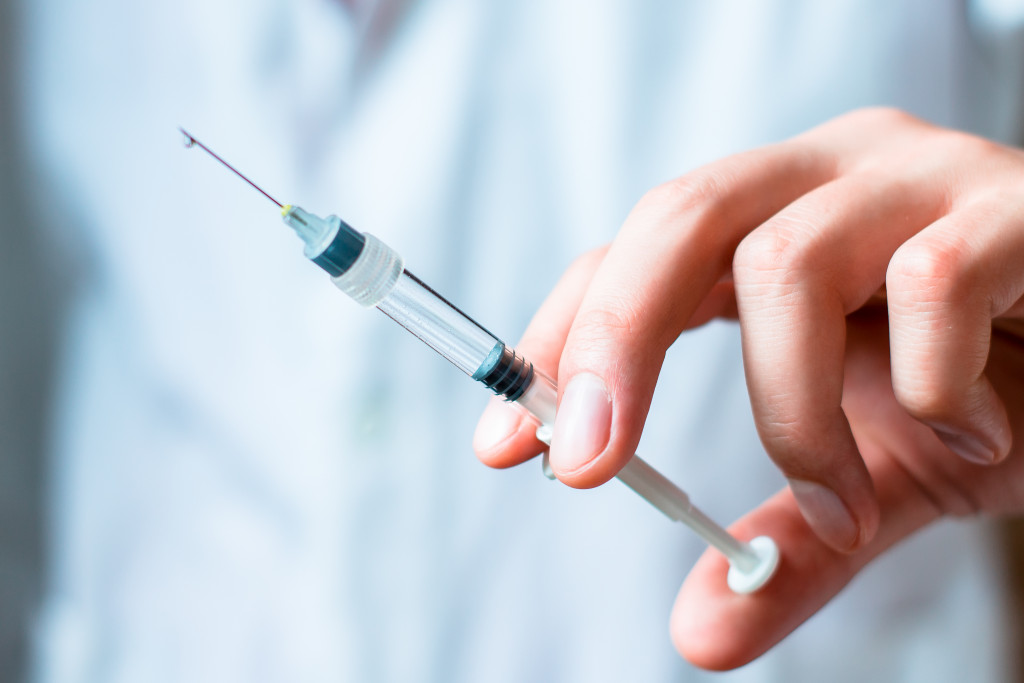According to US News, the Omicron variant is causing over 98 percent of COVID-19 cases in the United States as of January 18. Science News reports that a study done by researchers from the United Kingdom and Germany found that Omicron’s transmissibility is 160 to 200 percent higher than that of the Delta variant.
Because of Omicron’s much higher rate of transmission, the sheer number of people infected who need hospitalization is straining the capacity of the nation’s healthcare system. According to the US Department of Health and Human Services, there are now 150,178 people admitted to various hospitals due to Omicron. This means delays in treatments for people with other serious illnesses. Staff shortages worsen the situation as many healthcare workers are down with Omicron.
Omicron Symptoms
According to the Centers for Disease Control and Prevention’s (CDC) Morbidity and Mortality Weekly Report (MMWR) issued on January 25, Omicron causes less severe illness in the majority of patients. The reason is that Omicron usually stays as an upper respiratory tract infection. It presents as coughing, nasal congestion, a runny nose, sore throat, fever, and chills. It can also be accompanied by fatigue, headache, body aches, nausea, vomiting, or diarrhea. Loss of the sense of taste or smell is less common.
Omicron can still develop complications, including lower respiratory tract infection that reaches the lungs. Danger signs that signal the need for emergency medical attention include breathing difficulties; pressure or pain in the chest; a bluish-gray or pale tinge on the lips, nails, or skin; extreme weakness; and disorientation.
Emergency medical care at the hospital will include measuring oxygen levels in the patient’s blood. This determines if supplemental oxygen is needed. The patient will also undergo a chest X-ray, and a professional radiologist will evaluate the condition of the lungs.

Omicron Deaths in the United States
Despite being less severe than other variants, the number of deaths from Omicron is increasing due to the high number of people infected and complications. On January 26, the CDC updated its national ensemble forecast that combines various independent forecasts. CNN stated that the CDC predicted 62,000 additional deaths possibly occurring from January 24 to February 19, potentially bringing total deaths to 979,000. The forecast is for fatalities to rise consistently in the first three weeks before declining in the fourth week.
US News highlights that the severity of Omicron depends on the patient’s vaccination status. Most of those who develop severe complications akin to the original strain of COVID-19, and are at risk of dying, are unvaccinated. Age is an additional factor. CDC data shows that, compared to fully vaccinated and boosted people, those who are unvaccinated and from 50 to 64 years old are 44 times more likely to need hospitalization due to Omicron. Unvaccinated people aged 65 and older are 49 times more likely to require hospitalization. Unvaccinated people who are immunocompromised or have underlying medical conditions are also more vulnerable.
There are still breakthrough Omicron cases among fully vaccinated and boosted people. Most of them experience milder outcomes, though, like a bad case of flu. Unfortunately, only 63.5 percent of the eligible population in the US is fully vaccinated. Among them, only 40.4 percent took booster shots.
Testing Issues
Health experts remind people that since January 18, every residential address can order four free COVID-19 rapid test kits online from COVIDtests.gov. However, it also notes that rapid tests can result in false negatives. The person must continue to take precautions to prevent infecting others.
Science News concurs. It cited a Hong Kong study published at medRxiv.org last December 24, stating that saliva swabs are more effective than nasal swabs in detecting Omicron. The same result was submitted to medRxiv.org on January 4 by infectious disease epidemiologist and economist Blythe Adamson from New York. Another study preprinted on medRxiv.org on January 10 was from Unidos en Salud, a partnership among the University of California, Berkeley; the University of California in San Francisco; and the Chan Zuckerberg Biohub. It showed that in the BinaxNOW testing site in San Francisco, the rapid antigen test could only detect high levels of the virus but not when people are just about to get infectious.
Problems with Medicines
Medicines were developed and approved by the US Food and Drug Administration (FDA) against Omicron, including Remdesivir by Gilead Sciences, Paxlovid by Pfizer, and Molnupiravir by Merck. Each has issues, though.
According to Science News, Molnupiravir cuts the likelihood of hospitalization by 30 percent. There is a risk that it might cause genetic mutations, though, affecting a woman’s current or future pregnancy. Remdesivir also proved effective in preventing hospitalization. It must be given intravenously, though, so it cannot be given at home. Paxlovid is a pill but its interactions with other medications that the patient takes can cause an inadvertent overdose of the other medications.
While other medicines must be developed, health experts across the nation expressed concern about the near future. They agreed that there is no way to know when new COVID-19 variants will appear and how they will act. Meanwhile, the best defense is still complete vaccination and booster shots.
